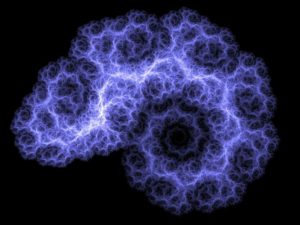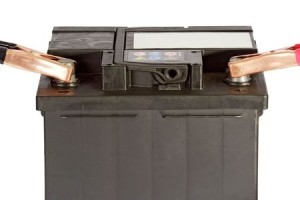Better Living Through Brain Stimulation

Electrical stimulation to treat medical conditions is not the new, cutting edge research and treatment one would expect. Besides electroconvulsive therapy (ECT), which originated in the 1930s, there is evidence the ancient Egyptians knew about the electrical properties of Nile catfish. However, it’s not clear if they used them for medical purposes. The first evidence for electrical “treatment” dates from Plato and Aristotle who described the ability of the torpedo fish to generate so-called “curative effects.” Scribonius Largus (1-50 AD) and Galen (130-201 AD) said the torpedo fish could be used to treat headache, gout, and epilepsy.
Today, not only is there ECT, but Transcranial Magnetic Stimulation (TMS), Repetitive Transcranial Magnetic Stimulation (rTMS), Transcranial Direct Current Stimulation (tDCS), Deep Brain Stimulation (DBS) and more. There are two, perhaps three needed distinctions. First, every type of brain stimulation except DBS is noninvasive—meaning they do not require surgery. DBS surgically implants parts of the stimulation device into the patient’s brain. The second distinction is that tDCS is the only brain stimulation that does not require a physician’s prescription. It is also more affordable and “safer.”
Thirdly, ECT uses very high current levels, around 800 milliamps, to induce an intentional, controlled seizure. For a comparison, tDCS uses a maximum of 2 milliamps. “Due to the severity of the effects produced by Electroconvulsive Therapy, the patient is almost always sedated during stimulation, which lasts for an average of 1 to 6 seconds. The required use of sedation greatly increases the potential, and severity of any negative side effects.” Sedation during ECT is to prevent fractures from severe muscle spasms, according to Peter Breggin in Brain Disabling Treatment in Psychiatry, (p. 242):
For the past 40 and more years, a modified form of ECT had been standard, involving sedation with a short-acting barbiturate, muscle paralysis with a curare derivative or similar drugs that prevent activation of the muscles of the body and artificial respiration with oxygen. The purpose of these modifications was not, as some advocates claim, to reduce memory loss and brain damage. Muscle paralysis was intended to prevent fractures from severe muscle spasms, while the artificial respiration kept the paralyzed patient breathing.
TMS and rTMS are electromagnetic therapies typically used for treatment-resistant depression. Patients sit in a specially designed chair with positioning frames used to hold their head in place during treatment. “Positioning frames are required for TMS therapy because the stimulation apparatus does not touch the individual’s head, but instead hovers just a few centimeters above the scalp.” The key difference with rTMS is the repetitive nature of the magnetic pulses, which is rapidly increased, switching between positive and negative polarities in milliseconds. The increased strength of electromagnetic induction in rTMS may potentially “solidify longer lasting changes in the brain, whereby TMS may only induce short-term changes.” Yet a recent study found no difference in remission rates between rTMS and sham rTMS.
TMS devices can only penetrate a few centimeters into the outer cortex of the brain. Because of the way electromagnetic fields operate, the strength of TMS devices declines rapidly the farther away the machine is positioned from the scalp. So, if targeting deeper regions of the brain is what you want, a more direct stimulation method like tDCS is needed. tDCS devices are available for home use. However, because of the complex nature of the technology and the need for precise positioning of the electrodes, it is recommended they only be used within clinical settings. Another consideration is that you are sending an electric current, albeit a low one, to modulate neuronal excitability in a specific area of your brain.
An article in Psychological Medicine gave a brief history of tDCS, and noted the 20th century discovery in Iraq of the “Baghdad battery,” a DC generator dated from the ancient Persian civilization (490 BC). It was possibly used for medical purposes. It wasn’t until the 1800s that a DC battery was invented by Luigi Galvani. His nephew, Giovanni Aldini, was the first person to use DC for clinical purposes. A 27-year old farmer was treated for melancholy madness (major depression). “The patient’s mood progressively improved so that Lazarini [the patient] was apparently completely cured several weeks after the beginning of the treatment.”
It wasn’t until 1998 that modern tDCS was developed. Technological innovation has enabled electronic and biomedical engineers to build “precise tDCS devices with better control of stimulation parameters” than older devices—and do so at reduced costs. This led some people to experiment with self-administering tDCS and sometimes having tDCS touted as a ‘miracle device.’ However, even the receptive authors of the article on tDCS cautioned against such media attention. They urged careful, neutral presentation of data to the public. “Sensationalistic news about the benefits of tDCS leads people to self-administer stimulation, as we can see in some Internet do-it-yourself tDCS forums.”
tDCS devices are inexpensive and easy to use. There are even YouTube videos of individuals experimenting on themselves. Dan Hurley published an article for The New York Times, describing the history and science of tDCS as well as his personal experience with it. He described the work of Dr. Felipe Fregni, an Associate Professor at Harvard. He has written extensively about the potential benefits of tDCS, including its effects on “migraine, chronic pain, post-stroke paralysis, Parkinson’s disease, depression, tinnitus, fibromyalgia, marijuana craving and, strangely enough, the tendency to lie.” Dr. Fregni said the main safety concern is that individuals have begun treat themselves: “What they fail to realize is that applying too much current, for too long, or to the wrong spot on the skull, could be extremely dangerous.” See “Jump Starting Your Brain” for more information and concerns with tDCS.
While not technically tDCS, the FDA recently approved a new cranial electrotherapy stimulator (CES) for the treatment of anxiety, depression and insomnia. The Cervella Cranial Electrotherapy Stimulator uses a Bluetooth-enabled set of headphones and an app to deliver a low-level, constant current to the individual’s cranium. According to the parent company, Cervella allows for automated recoding of treatment data, reminders and analytics aimed at improving patient outcomes. You also need a prescription in order to purchase one for the cost of $695.
Another form of electrostimulation called transcranial alternating-current stimulation (tACS) recently demonstrated the possibility of reversing the decline of working memory that comes with the aging brain. After 25 minutes of stimulation, the researchers found a rapid improvement in working memory for adults aged 60 to 76 years-old. The effects outlasted a 50-minute post-stimulation period. “The results provide insight into the physiological foundations of age-related cognitive impairment and contribute to groundwork for future non-pharmacological interventions targeting aspects of cognitive decline.”
Working memory is responsible for decision-making and allowing us to retain and access information such as names, phone numbers, and where we’ve put things. Age and cognitive deterioration in disorders like dementia contribute to the decline of working memory. The hypothesis tested by this study is that working memory operates by slow, low-frequency theta rhythms synchronizing with faster, gamma rhythms between the prefrontal and temporal areas in the brain. When these two areas are on the same wave length, “communication is tight, and working memory functions seamlessly.” As we age, these brain areas lose their synchronicity.
Interestingly, when a targeted form of tACS stimulation (HD-tACS) was used on participants, the age-related synchronization discrepancies disappeared. “HD-tACS appeared to eliminate age-related impairment in working-memory accuracy.” In a related test, young adults with poor working memory received the HD-tACS stimulation and also improved their results. “We could boost their working memory even though they weren’t in their 60s or 70s.”
Neuroscientists, including the lead author of the study, cautioned that more work needed to be done with HD-tACS. The boost in performance may be statistically significant, but not clinically significant. This is also only one study so far. “I’d like to see this replicated by other labs, and extended to test other aspects of working memory.” STAT News said for HD-tACS stimulation to become a treatment for working memory deficits, “it would have to overcome a long list of hurdles, starting with proof that it’s safe.” Regardless of whether this experiment results in practical applications, it does provide evidence of the differences in working memory with older adults: “Brain circuits become functionally disconnected and fall out of synchrony.”
Deep Brain Stimulation (DBS) is an entirely different animal. A preliminary surgical procedure implants part of the device into a patient’s brain. Wires connecting the electrodes to the device, and sometimes the device itself, are implanted underneath the skin’s surface. DBS is a relatively new technique and considered to be a last resort treatment method, as are TMS and ECT. There are immense risks to DBS and currently it is only used to treat severe neurological conditions like Essential Tremor, Parkinson’s Disease, Tourettes Syndrome, and Dystonia. Long-term studies of Parkinson’s patients treated with DBS have shown they have DBS-related scar tissue in their brains. There have also been serious mood, behavior and personality changes documented.
These include suicide, depression, apathy, fatigue, mania and serious impulse control issues, such as hypomania, aggression, addiction (to gambling, shopping, drugs, alcohol) and hypersexuality, sometimes resulting in criminal behaviour, including pedophilia.
And by the way, they aren’t quite sure how it works. See, “Deep Brain Jolts” and “Deep Brain Problems” for more information on DBS.
None of the above-described methods of brain stimulation should be used at home without a prescription or the supervision of a doctor, including tDCS and tACS. There are potential serious adverse effects for some procedures like ECT and DBS. Better memory and living through brain stimulation is still a future hope and may just be a pipe dream. For more on issues with electrical brain stimulation, also see “Electrical Psychiatry.”

